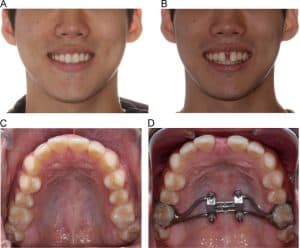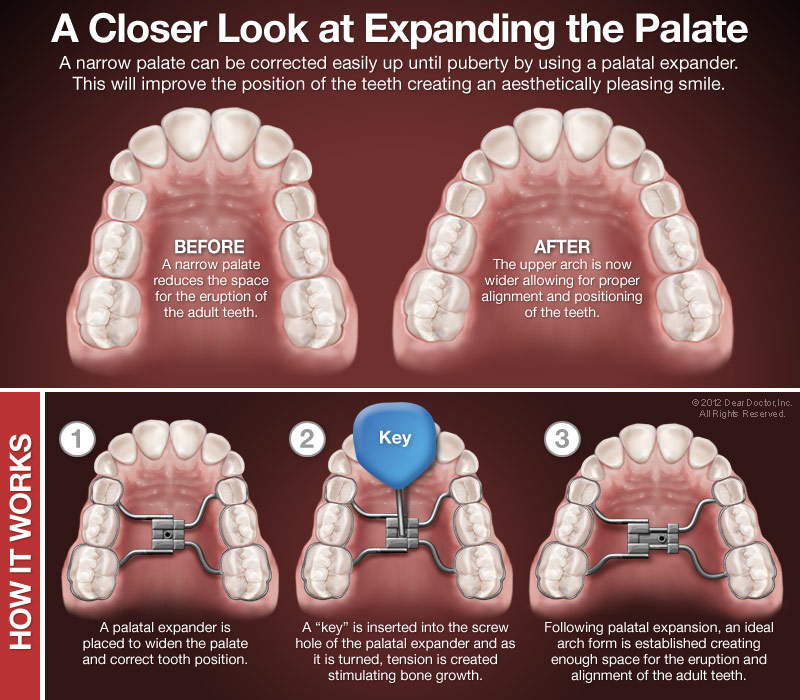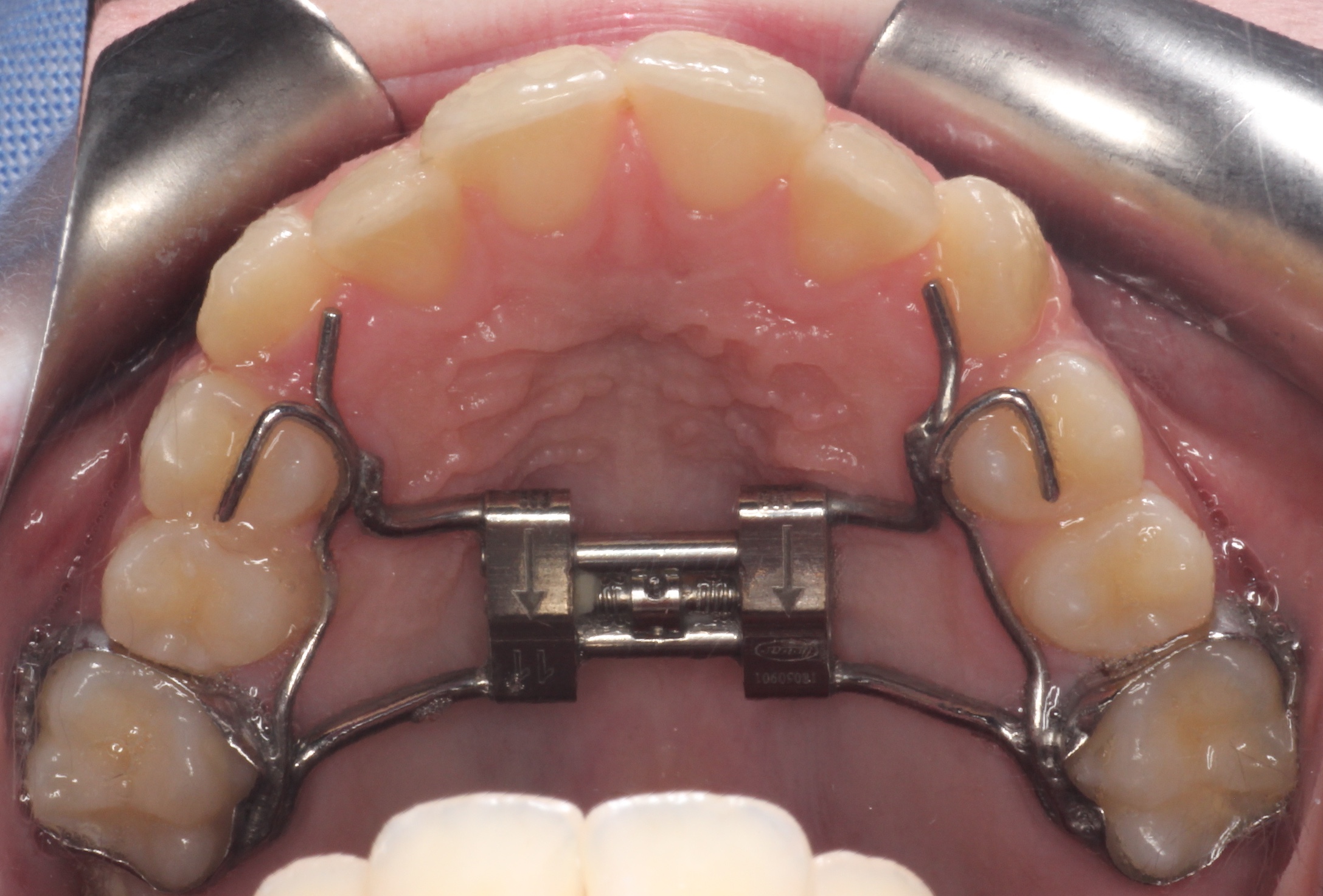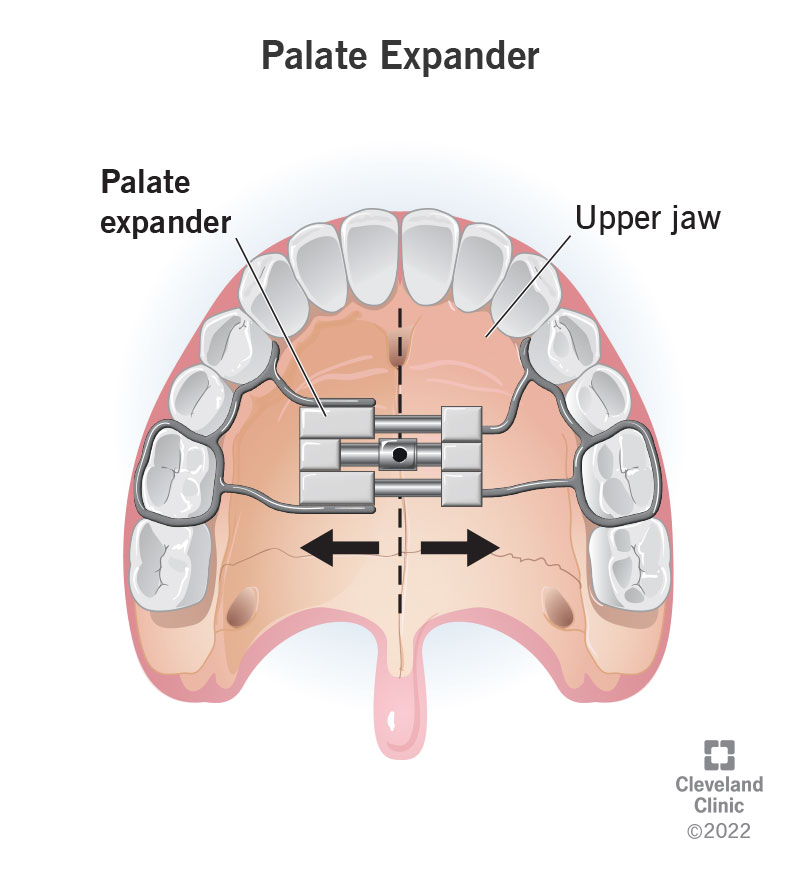In addition to discomfort, patients may also experience difficulty with speech. The palate expander can temporarily affect speech patterns, causing a lisp or other speech impediment. This is due to the presence of the appliance in the mouth, which can alter the way air flows through the oral cavity. However, with practice and time, most patients are able to adapt and regain their normal speech patterns.
What to Expect from Palate Expander: Side Effects and More
Side Effects of Palate Expanders

Like any orthodontic treatment, palate expanders can cause some side effects. These may include:
- Increased saliva production: Some patients may experience an increase in saliva production, which can lead to drooling. This is a normal response to the presence of a foreign object in the mouth and usually diminishes over time.
- Minor cuts or sores: The expander may rub against the inside of the cheeks or gums, causing minor cuts or sores. These can be managed with wax or dental silicone provided by the orthodontist.
Other Considerations
In addition to the potential side effects, there are a few other things to consider when getting a palate expander:
- Adjustments: Palate expanders require regular adjustments by the orthodontist to gradually widen the jaw. These adjustments may cause some temporary discomfort but are necessary for the success of the treatment.
- Dietary changes: Some patients may need to make temporary dietary changes to accommodate the palate expander. Hard, sticky, or chewy foods should be avoided to prevent damage to the device.
A palate expander is a dental device that is used to widen the upper jaw. It is commonly used in orthodontic treatment to correct issues such as crowding, crossbite, and narrow arches. The device is typically made of metal and consists of two halves that are connected in the middle by a screw.
Palate expanders work by applying gentle pressure on the upper jaw, gradually widening it over time. This creates more space for the teeth to align properly and improves the overall bite and facial symmetry. The device is usually installed by an orthodontist and is adjusted periodically to achieve the desired expansion.
Types of Palate Expanders
There are several types of palate expanders available, including:
- Traditional Palate Expander: This is the most common type of palate expander. It is cemented to the molars and is adjusted using a key that turns the screw in the middle, gradually widening the device.
- Rapid Palate Expander (RPE): This type of expander is similar to the traditional one, but it is designed to achieve faster results. It is often used in cases where rapid expansion is required.
- Removable Palate Expander: This type of expander is removable and is typically used in cases where minor expansion is needed. It can be taken out for eating and oral hygiene purposes.
Benefits of Palate Expanders
Palate expanders offer several benefits, including:
- Improved breathing: By widening the upper jaw, palate expanders can create more space for the nasal passages, improving airflow and reducing breathing difficulties.
- Enhanced facial symmetry: Palate expanders can help correct issues with the alignment of the upper jaw, improving facial symmetry and overall aesthetics.
- Reduced risk of dental problems: By creating more space for the teeth, palate expanders can help prevent overcrowding and reduce the risk of dental issues such as tooth decay and gum disease.
- Improved bite: Palate expanders can help correct crossbites and other bite issues, improving the overall function and comfort of the bite.
Preparing for Palate Expansion: What to Know
1. Consultation with an Orthodontist: The first step in preparing for palate expansion is to schedule a consultation with an orthodontist. During this appointment, the orthodontist will evaluate your dental and facial structure to determine if palate expansion is necessary and appropriate for your specific case.
2. Treatment Plan: Once it is determined that palate expansion is needed, the orthodontist will create a personalized treatment plan for you. This plan will outline the goals of the treatment, the duration of the expansion process, and any other necessary steps or procedures.
3. Dental Impressions: In order to create a custom palate expander, the orthodontist will take dental impressions of your teeth and mouth. These impressions will be used to design and fabricate a palate expander that fits your unique dental structure.
4. Pre-Expansion Instructions: Prior to the installation of the palate expander, your orthodontist will provide you with specific instructions to follow. These instructions may include dietary restrictions, oral hygiene guidelines, and any necessary preparations for the procedure.
6. Communication with the Orthodontist: Throughout the entire palate expansion process, it is crucial to maintain open communication with your orthodontist. If you have any concerns or questions, do not hesitate to reach out to your orthodontist for guidance and support.
By being well-prepared and informed about the palate expansion process, you can ensure a smoother and more successful treatment journey. Remember to follow your orthodontist’s instructions and guidelines for the best possible outcome.
The Procedure: How Palate Expanders Are Installed
Consultation and Evaluation
The first step in getting a palate expander is to schedule a consultation with an orthodontist. During this initial visit, the orthodontist will evaluate your dental condition and determine if a palate expander is the right treatment for you.
Impressions and X-Rays
If a palate expander is recommended, the next step is to take impressions of your teeth and gums. These impressions will be used to create a custom-made expander that fits your mouth perfectly. X-rays may also be taken to assess the position of your teeth and jaw.
Fitting and Installation

Once the expander is ready, you will return to the orthodontist’s office for the fitting and installation. The orthodontist will carefully place the expander in your mouth and make any necessary adjustments to ensure a proper fit.
The expander consists of a metal framework with a screw in the middle. The screw is turned using a special key, which gradually widens the expander and applies gentle pressure to the palate. This pressure helps to gradually widen the upper jaw and create more space for the teeth.
Activation and Adjustment
After the expander is installed, you will be given instructions on how to activate and adjust it. Typically, the expander needs to be activated once or twice a day by turning the screw a small amount. This process is usually painless but may cause some pressure or discomfort initially.
Monitoring and Follow-Up
Throughout the treatment period, you will have regular appointments with your orthodontist to monitor the progress of the palate expansion. These appointments allow the orthodontist to make any necessary adjustments to the expander and ensure that the treatment is progressing as planned.
Once the desired amount of expansion is achieved, the orthodontist will remove the expander. At this point, you may be fitted with a retainer to maintain the new position of your teeth and prevent them from shifting back.
Overall, the installation of palate expanders is a relatively straightforward procedure that can help correct dental issues and improve oral health. By following the orthodontist’s instructions and attending regular appointments, you can achieve the desired results and enjoy a healthier, more beautiful smile.
Common Side Effects of Palate Expanders

3. Difficulty speaking: It is common to experience difficulty speaking when the palate expander is first installed. This is because the expander takes up space in the mouth, which can affect tongue movement and speech patterns. With practice and time, however, most patients are able to adapt and regain their normal speech patterns.
5. Increased saliva production: Some patients may experience an increase in saliva production when wearing a palate expander. This is a normal response to the foreign object in the mouth and should decrease as your mouth becomes accustomed to the expander.
6. Speech impediments: In some cases, palate expanders can cause temporary speech impediments, such as a lisp or difficulty pronouncing certain sounds. This is usually due to the expander’s presence in the mouth and should improve as your mouth adjusts.
Dealing with Discomfort: Tips for Managing Pain
When you first get a palate expander, it’s common to experience some discomfort and pain. This is because the expander is putting pressure on your palate to widen it. However, there are several tips you can follow to help manage the pain and make the adjustment period more comfortable.
- Take over-the-counter pain medication: If you’re experiencing significant pain, you can take over-the-counter pain medication such as ibuprofen or acetaminophen. Be sure to follow the recommended dosage instructions and consult with your orthodontist if you have any concerns.
- Apply ice: Applying ice to the outside of your face can help reduce swelling and numb the area, providing temporary relief from pain. Wrap the ice pack in a thin cloth and apply it to the affected area for about 10-15 minutes at a time.
- Eat soft foods: During the first few days after getting a palate expander, it’s best to stick to soft foods that require minimal chewing. This can help prevent additional discomfort and make eating easier. Opt for foods like mashed potatoes, yogurt, soup, and smoothies.
- Avoid hard, sticky, and crunchy foods: These types of foods can put extra pressure on your palate and cause more pain. It’s best to avoid them until you’re more accustomed to the expander. Stay away from foods like popcorn, nuts, hard candies, and chewy candies.
- Use saltwater rinses: Saltwater rinses can help soothe any irritation or soreness in your mouth. Mix half a teaspoon of salt with eight ounces of warm water and swish it around in your mouth for about 30 seconds before spitting it out. Repeat this a few times a day.
- Stay hydrated: Drinking plenty of water can help keep your mouth lubricated and reduce any dryness or discomfort. Aim to drink at least eight glasses of water per day.
Remember, the discomfort and pain associated with a palate expander are temporary and will subside as your mouth adjusts to the appliance. Following these tips can help make the process more manageable and ensure a successful treatment outcome.
Eating and Oral Hygiene with Palate Expanders
1. Eating with a Palate Expander
Initially, you may find it a bit challenging to eat with a palate expander. It is common to experience some discomfort and difficulty when chewing and swallowing. However, with time, you will get used to it. Here are a few tips to make eating easier:
- Stick to soft foods: In the beginning, opt for softer foods that require less chewing. This can include soups, mashed potatoes, yogurt, smoothies, and soft fruits.
- Cut food into smaller pieces: If you are having trouble biting into larger pieces of food, try cutting them into smaller, more manageable pieces.
- Avoid sticky and hard foods: Sticky candies, chewing gum, and hard foods like nuts and popcorn can get stuck in your palate expander or damage it. It is best to avoid these foods until your treatment is complete.
- Take smaller bites: Instead of taking large bites, try taking smaller, more controlled bites to make chewing easier.
2. Oral Hygiene with a Palate Expander
Keeping your mouth clean is crucial when you have a palate expander. Food particles can easily get trapped in the appliance, leading to plaque buildup and potential oral health issues. Here are some tips for maintaining good oral hygiene:
- Floss daily: Flossing can be a bit more challenging with a palate expander, but it is still essential. Use a floss threader or orthodontic floss to clean between your teeth and around the appliance.
- Rinse with mouthwash: Using an antimicrobial mouthwash can help kill bacteria and freshen your breath. Rinse your mouth with mouthwash after brushing and flossing.
- Attend regular dental cleanings: Regular dental cleanings are even more important when you have a palate expander. Your dentist can thoroughly clean your teeth and check for any issues.
Remember, good oral hygiene is crucial for the success of your orthodontic treatment. By following these tips, you can ensure that your palate expander does not negatively impact your oral health.
Adjustments and Progress: What to Expect
As you continue with your palate expander treatment, you can expect to experience adjustments and see progress over time. Here are some things to expect during this stage:
- Regular adjustments: Your orthodontist will schedule regular appointments to adjust your palate expander. During these appointments, the expander will be activated to gradually widen your palate. These adjustments may cause some discomfort, but it should subside after a few days.
- Speech changes: As your palate expands, you may notice changes in your speech. It may take some time to adjust to speaking with the expander in place. Practice speaking and enunciating words to help improve your speech during this period.
- Progress tracking: Your orthodontist will monitor your progress throughout the treatment. They will take measurements and evaluate how well the expander is working. This will help determine the next steps in your orthodontic treatment plan.
- Length of treatment: The duration of palate expander treatment varies from person to person. It can range from a few months to a year or more, depending on the individual case. Your orthodontist will give you an estimate of how long your treatment is expected to take.
Remember to follow your orthodontist’s instructions and attend all scheduled appointments to ensure the best possible results. With patience and proper care, you will gradually see the desired changes in your palate and overall oral health.
Removing Palate Expanders: The Final Steps

After the desired expansion of the palate has been achieved, it is time to remove the palate expanders. This process is relatively simple and painless, but it should be done by a dental professional to ensure that it is done correctly.
The first step in removing palate expanders is to loosen the screws or turn the key to reverse the expansion. This is usually done gradually over a period of time to allow the palate to adjust and stabilize.
Once the expansion has been reversed, the dental professional will carefully remove the palate expanders from the mouth. This is done by gently unscrewing the appliance or releasing any clips or hooks that are holding it in place.
After the palate expanders have been removed, the dental professional will thoroughly clean the patient’s mouth and teeth to remove any residual adhesive or debris. This is important for maintaining oral hygiene and preventing any potential complications.
It is common for patients to experience some mild discomfort or soreness after the palate expanders have been removed. This can be managed with over-the-counter pain relievers and by following any additional instructions provided by the dental professional.
Once the palate expanders have been removed, the patient’s orthodontic treatment may continue with other appliances or braces to further align the teeth and jaw. The dental professional will discuss the next steps in the treatment plan and provide any necessary instructions.

Dr. Fidel Cann: Esteemed orthodontist with a lifelong dedication to enhancing smiles and oral health. Pioneering expertise, compassionate care.






